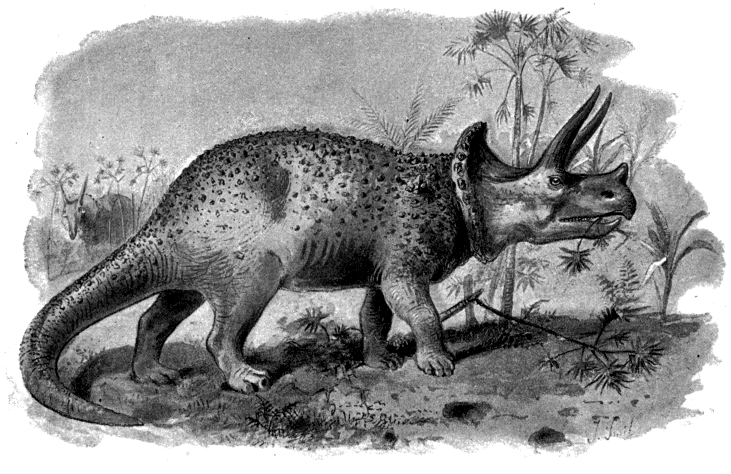Extinct Monsters
EXTINCT MONSTERS.
A POPULAR ACCOUNT OF SOME OF THE LARGER
FORMS OF ANCIENT ANIMAL LIFE.
BY
REV. H. N. HUTCHINSON, B.A., F.G.S.,
AUTHOR OF “THE AUTOBIOGRAPHY OF THE EARTH,”
AND “THE STORY OF THE HILLS.”
WITH ILLUSTRATIONS BY J. SMIT AND OTHERS.
FIFTH AND CHEAPER EDITION.
LONDON: CHAPMAN & HALL, LD.
1897.
All rights reserved.
“The possibilities of existence run so deeply into the extravagant thatthere is scarcely any conception too extraordinary for Nature to realise.”—Agassiz.
PREFACE BY DR. HENRY WOODWARD, F.R.S.
KEEPER OF GEOLOGY, NATURAL HISTORY MUSEUM.
I have been requested by my friend Mr. Hutchinson, toexpress my opinion upon the series of drawings whichhave been prepared by that excellent artist of animals,Mr. Smit, for this little book entitled “Extinct Monsters.”
Many of the stories told in early days, of Giants andDragons, may have originated in the discovery of the limb-bonesof the Mammoth, the Rhinoceros, or other largeanimals, in caves, associated with heaps of broken fragments,in which latter the ignorant peasant saw in fancythe remains of the victims devoured at the monster’srepasts.
In Louis Figuier’s World before the Deluge we arefavoured with several highly sensational views of extinctmonsters; whilst the pen of Dr. Kinns has furnishedvaluable information as to the “slimy” nature of theirblood!
The late Mr. G. Waterhouse Hawkins (formerly a lithographicartist) was for years occupied in unauthorisedrestorations of various Secondary reptiles and Tertiarymammals, and about 1853 he received encouragement[vi]from Professor Owen to undertake the restorations ofextinct animals which still adorn the lower grounds of theCrystal Palace at Sydenham.
But the discoveries of later years have shown that theDicynodon and Labyrinthodon, instead of being toad-likein form, were lacertilian or salamander-like reptiles, withelongated bodies and moderately long tails; that theIguanodon did not usually stand upon “all-fours,” but morefrequently sat up like some huge kangaroo with shortfore limbs; that the horn on its snout was really on itswrist; that the Megalosaurus, with a more slender formof skeleton, had a somewhat similar erect attitude, and thehabit, perhaps, of springing upon its prey, holding it withits powerful clawed hands, and tearing it with its formidablecarnivorous teeth.
Although the Bernissart Iguan

